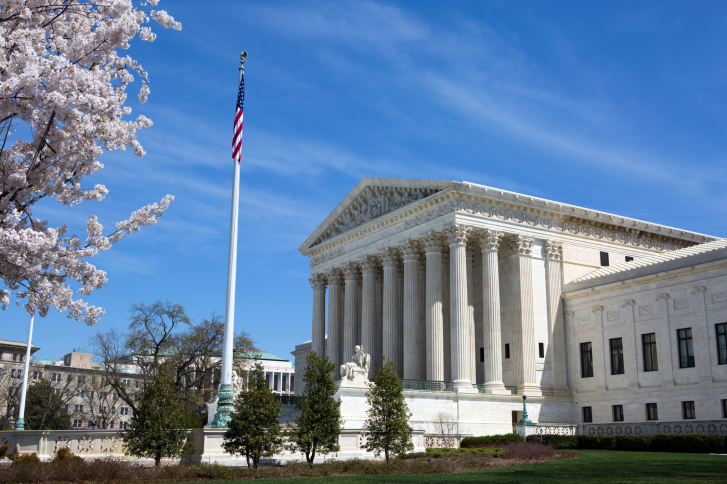At least eight states have implemented de facto regulations on chemicals they deem “hazardous” by creating “chemicals of concern” lists. Proponents claim the lists are necessary to protect consumers from potentially hazardous chemicals in products, and they argue a lack of federal regulations means states must step in. Opponents say the lists are based on the false assumption that there is a bright line dividing “dangerous chemicals” from “safe chemicals.”
Regulating chemicals that pose clear, significant health or environmental risks is justified. But chemicals of concern lists often fail to take into consideration the quantity at which these chemicals potentially pose any significant danger, falsely assuming any quantity poses a significant risk to the public. The Green Chemistry Alliance notes, “Some involved in the debate insist that the [California] Department of Toxic Substances Control must not prioritize its work—it must identify and regulate absolutely every chemical used in commerce today as if each posed an equal threat to consumers.”
The state of Washington’s law, by contrast, acknowledges that chemicals are not toxic regardless of the quantity: “Reporting the presence of a Chemicals of High Concern for Children (CHCC) does not establish that the product is harmful to human health.” This caveat notwithstanding, putting a chemical on such a list should not be taken lightly, as doing so burdens product makers and could mislead consumers about product safety.
The threshold for reasonably safe chemical exposure in consumer products varies significantly depending on the amount of chemical used in the product, what the item is used for, and who is in contact with it. For instance, a flame-retardant chemical may be toxic if you drink a significant amount of it, but when used on clothing it provides important protection at little to no risk.
Putting chemicals on such lists when it’s not necessary makes products less effective and more expensive while producing zero or negligible public health and environmental benefits.
The following documents provide more information about chemical regulations and chemical of concern lists.
Regulating Environmental Hazards
http://heartland.org/policy-documents/regulating-environmental-hazards
Richard Wilson of the Cato Institute writes in Regulation about the flawed regulation of presumed environmental hazards. He explains, “just as there is no perfectly safe speed for a car, we cannot take it for granted that there is a ‘safe’ threshold of exposure to environmental hazards. By the same token, it is meaningless to strive for ‘no risk’ or perfect safety when it comes to environmental hazards. All we can do is estimate the probability of a chronic effect in a population, then decide whether and how to reduce that probability to an ‘acceptable’ level.”
The Paralyzing Principle
http://www.cato.org/pubs/regulation/regv25n4/v25n4-9.pdf
The current administrator of the U.S. Office of Information and Regulatory Affairs, Cass R. Sunstein, documents the problems with the precautionary principle. Sunstein writes, “The Precautionary Principle might well be seen as a plea for a kind of regulatory insurance. Certainly the principle might do some real-world good, spurring us to attend to neglected problems. Nonetheless, the principle cannot be fully defended in those ways, simply because risks are on all sides of social situations. Any effort to be universally precautionary will be paralyzing, forbidding every imaginable step, including no step at all.”
The True Story of Cosmetics: Exposing the Risks of the Smear Campaign
http://heartland.org/policy-documents/true-story-cosmetics-exposing-risks-smear-campaign
The Competitive Enterprise Institute criticizes unfounded attacks against the use of many cosmetics and hygiene products. The paper concludes, “Instances where consumers have been injured by using a personal care product are minute to nonexistent.”
Chemicals, Regulation, and Real Science
http://www.aei.org/article/101584
This article by American Enterprise Institute Visiting Fellow John Entine examines the Food and Drug Administration’s 2010 decision not to ban bisphenol A (BPA). The article observes, “we need standards and established systems—objective science—to guide us in weighing the benefits and potential hazards of chemicals, drugs, whatever. But the moment we abandon standards for fashion or under political pressure, no matter how superficially attractive that may seem to be, we place in danger the entire system of checks and balances.”
Comments by the Green Chemistry Alliance—Safer Alternatives Regulations
http://www.greenchemistryalliance.org/Media/FinalGCAComments-SaferAlternativesRegs05.27.10.pdf
The Green Chemistry Alliance, which represents the trade associations and organizations of California’s largest employers, responds to the Safer Alternatives draft regulation, warning, “Although the impending draft regulation will be just that—a draft—the details are critical and could have sweeping ramifications on virtually all industry sectors which manufacture or sell consumer products in the state.”
The Environmental Source: Chemical Risk Overview
http://heartland.org/policy-documents/environmental-source-chemical-risk-overview
The Competitive Enterprise Institute analyzes the current state of chemical risks, noting that even though people are living longer, there is an unfounded fear about the risks of most chemicals: “Ignoring that nature produces far more chemicals at far higher doses and that most chemicals are innocuous at low doses, activists capitalize on those fears. They scare the public by hyping the risks to ensure that the government passes volumes of laws and regulations focused on eliminating chemicals without much regard for the tradeoffs.”
Hazardous Chemical Crackdown Gains Momentum in States
http://www.stateline.org/live/details/story?contentId=607853
Stateline, the online news outlet for The Pew Center on the States, notes many states are beginning to take up chemical regulations because the federal government has not updated The Toxic Chemicals Control Act of 1976.
For further information on this subject, visit the Environment & Climate News Web site at http://news.heartland.org/energy-and-environment, The Heartland Institute’s Web site at http://heartland.org, and PolicyBot, Heartland’s free online research database, at www.policybot.org.
Nothing in this message is intended to influence the passage of legislation, and it does not necessarily represent the views of The Heartland Institute. If you have any questions about this issue or the Heartland Web site, you may contact Heartland’s director of government relations John Nothdurft at [email protected] or 312/377-4000.



